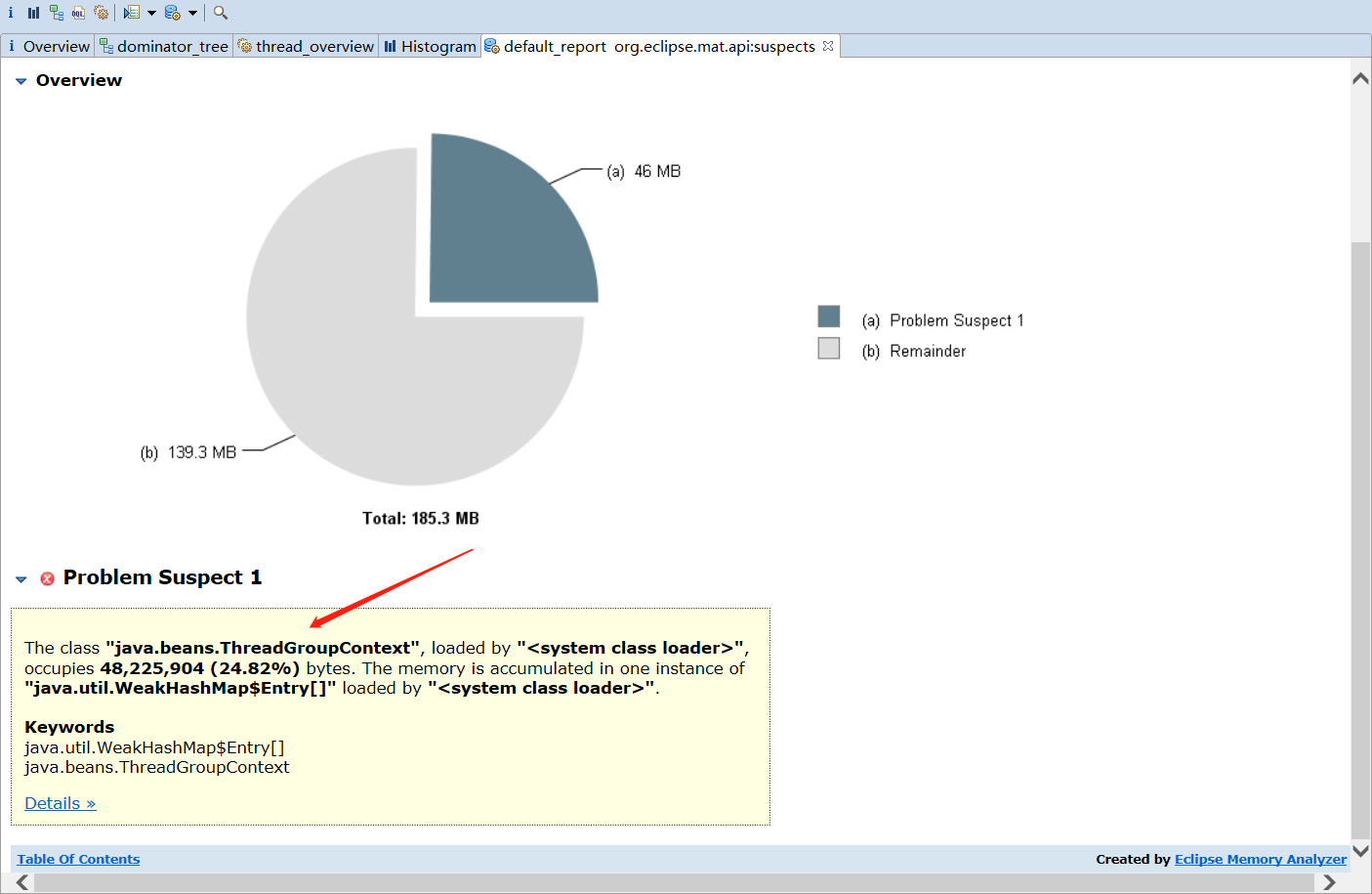出处:https://www.jianshu.com/p/ce6f8a1f66f4
一、一些内部元件的访问
testRunner.testCase开头
1、向下访问
testRunner.testCase.testSteps[testStepName]
testRunner.testCase.getTestStepByName("新增一个空间")
2、向上访问,用于访问同一项目中的其他testSuites 和 testCase下的元素
testRunner.testCase.testSuite.project.testSuites[testSuiteName].testCases[testCaseName].testSteps[testStepName]
3、几乎所有元件都有get 和set属性的方法
setPropertyValue getPropertyValue
//在下面的4,5,6点中,几乎所有的属性值都可以和对应的get方法互相替换等价
4、获取响应体
myResponse=testRunner.testCase.getTestStepByName("新增一个空间").testRequest.response
myRequest=testRunner.testCase.getTestStepByName("新增一个空间").testRequest
可以替换使用:getTestRequest(),testSteps[testStepName],getResponse()等。
比较特殊的2个
获取响应作为String
myResponse.contentAsString 或者 myRequest.getResponseContentAsString()
获取响应作为Xml
myResponse.contentAsXml 或者myRequest.getResponseContentAsXml()
5、响应头和请求头
响应头:
testRunner.testCase.getTestStepByName("新增一个空间").testRequest.response.responseHeaders["Location"]
或者testRunner.testCase.getTestStepByName("查询空间详情").testRequest.getResponse().getResponseHeaders("Location")
请求头:
testRunner.testCase.getTestStepByName("查询空间详情").testRequest.requestHeaders
testRunner.testCase.getTestStepByName("查询空间详情").testRequest.getRequestHeaders("Location")
设置请求头
def headerMap = new StringToStringMap() //
headerMap.put("headerKeyName","HeaderKeyWord") //添加到map
testRunner.testCase.getTestStepByName("查询空间详情").testRequest.setRequestHeaders(headerMap)
6、获取请求地址
testRunner.testCase.getTestStepByName("查询空间详情").testRequest.path
7、getAt(String) 方法,传入property名字,检索出值
针对testRunner下的所有对象,都可以通过此方法直接获取到 属性,例如:
testRunner.testCase.getTestStepByName("查询空间详情").testRequest.getAt("path")
对应:testRunner.testCase.getTestStepByName("查询空间详情").testRequest.path
testRunner.testCase.getTestStepByName("查询空间详情").testRequest.response.getAt("responseHeaders")
对应:testRunner.testCase.getTestStepByName("查询空间详情").testRequest.requestHeaders
8、获取全部用例并循环
def testCaseList = testRunner.testCase.testSuite.getTestCaseList()
testCaseList.each{
if(it.testSteps["Input"])
it.testSteps["Input"].setPropertyValue("spaceid",uid)
}
9、相对的获取用例数,getTestCaseCount()
for(int i=0; i<testSuite.getTestCaseCount(); i++) {
if (!testSuite.getTestCaseAt(i).isDisabled()) {
if (!(testSuite.getTestCaseAt(i).getTestStepByName("stepName")).equals()){
.....
}
}
}
10、获取getTestSuiteCount()
testRunner.testCase.testSuite.project.getTestSuiteCount()
11、获取名称
部分元件只有Label和Name中的一个,测试一下就知道了。
getLabel() 和getName()大多数情况是等价的
a. 取test case的名称
def tc = testRunner.testCase;
log.info (tc.getLabel());
b. 取test suite的名称
def ts = testRunner.testCase.testSuite;
log.info (ts.getLabel());
getName()
取project 名称
def tp = testRunner.testCase.testSuite.project;
log.info (tp.getName());
12、在断言中需要使用用例对象的话
messageExchange.modelItem.testCase.testSteps["Properties"].getPropertyValue("userId")
13、全局属性变量访问
对于项目中的属性可分为这么几个级别Global, Project,TestSuite, TestCase
即全局变量、项目级别、用例集级别、单个用例级别
要获得如项目级别的属性变量的话,可以用以下方法
def time_num=context.expand('${#Project#time_num}') //##号内为定义哪个级别的属性变量,后面为属性名
二、json操作
1、json builder
def createAuthorId = context.expand( '${查询空间详情#Response#$.createAuthorId}' )
def flag = "1"
import groovy.json.JsonBuilder
def json = new JsonBuilder()
json {
userID createAuthorId
fileflag flag}
return json
2、json 解析
如json为:
{"calendar": [ {"calendar_id":"1705","showtime":"1288927800","endshowtime":"1288931400","allDay":false},
{"calendar_id":"1706","showtime":"1288933200","endshowtime":"1288936800","allDay":false},
{"calendar_id":"1709","showtime":"1288935600","endshowtime":"1288938900","allDay":false}
] }
import groovy.json.JsonSlurper
def xresponse = testRunner.testCase.testSteps["getCalendarListByCoid"].testRequest.response.contentAsString
def slurper = new JsonSlurper()
def re = slurper.parseText(xresponse)
//访问顶级元素,返回的是一个列表使用size 获得长度
re.calendar re.calendar.size()
//访问元素模式
re.calendar.calendar_id re.calendar.calendar_id[index]
//另一种访问形式
re['calendar']['calendar_id'][index]
//查找过滤
re.calendar.calendar_id.find{it=='1706'} //获得的结果是 calendar_id 1706
re.calendar.find{it.calendar_id=='1706'} //获得的是calendar元素
三、XML操作(解析)
ef groovyUtils = new com.eviware.soapui.support.GroovyUtils(context )
//获取上下文对象,转化成groovyUtils对象
defwsdlResponse=testRunner.testCase.testSteps["发贴"].getTestRequest().getResponseContentAsXml()
log.info("wsdlResponse==="+wsdlResponse)
//获取指定步骤的返回信息并转化成xml
holder = groovyUtils.getXmlHolder(wsdlResponse)
//获取指定节点的值
defmessage=holder.getNodeValue("//ns1:Response[1]/ns1:response[1]/ns1:e[1]/ns1:message[1]")
log.info("获得节点对应的值是"+message)
deffandom_creator_sn=holder.getNodeValue("//ns1:fandom_creator_sn")
log.info("获得节点对应的值是"+fandom_creator_sn)
四、文件操作
直接百度groovy文件操作就好了,用得少不收集了
五、各级别的集合操作
1、TestSteps的操作
testRunner.testCase.testSuite.project.testSuites["互动空间测试用例"].testCases["空间管理测试"].testSteps
=getTestSteps()。都是获取用例下的testStep列表,返回的是 key=object 形式的字典map
getTestStepList() 获取用例下的testStep列表,纯列表
getTestStepCount() 获取数量
getTestStepAt(int) getTestStepById(java.util.UUID) 通过位置和UUID 查找step
getTestStepsOfType(com.eviware.soapui.impl.wsdl.teststeps.RestTestRequestStep.class) 通过类型过滤查找得到 testSteps列表。
2、testCases操作
testRunner.testCase.testSuite.project.testSuites["互动空间测试用例"].testCases=getTestCases()
返回的是 key=object 形式的字典map
getTestCaseList(), 获取的列表,纯列表
getTestCaseCount(), 获取数量
getTestCaseAt(int), getTestCaseById(java.util.UUID) 通过位置和UUID
3、testSuites操作
testRunner.testCase.testSuite.project.testSuites=getTestSuites()
返回的是 key=object 形式的字典map
getTestSuiteList(),获取的列表,纯列表
getTestSuiteCount() 获取数量
,getTestSuiteAt(int), getTestSuiteById(java.util.UUID) 通过位置和UUID
4、返回是list时操作
testCaseList=testRunner.testCase.testSuite.project.testSuites["互动空间测试用例"].getTestCaseList()
log.info testCaseList[0] //使用 index访问
//each循环
testCaseList.each{
it.xxxxx
}
5、返回是map时操作
testStepsMap=testRunner.testCase.testSuite.project.testSuites["互动空间测试用例"].testCases["空间管理测试"].testSteps
//使用名称key访问
log.info testStepsMap["新增一个空间"]
log.info testStepsMap.get("新增一个空间")
//遍历 使用默认闭包it
testStepsMap.each{
log.info it.key+" "+it.value
}
//使用自定义闭包名称遍历
testStepsMap.each{myp->
log.info myp.key+" "+myp.value
}
六、数据库操作
1、普通的jdbc编程
import java.sql.Connection;
import java.sql.DriverManager;
import java.sql.ResultSet;
import java.sql.SQLException;
import java.sql.Statement;
public class JDBCExample1 {
public static void main(String[] args) {
Connection con = null;
Statement stmt = null;
ResultSet rs = null;
try{
Class.forName("org.gjt.mm.mysql.Driver");
con = DriverManager.getConnection("jdbc:mysql://localhost:3306/words",
"words", "words");
stmt = con.createStatement();
rs = stmt.executeQuery("select * from word");
while (rs.next()) {
System.out.println("word id: " + rs.getLong(1) +
" spelling: " + rs.getString(2) +
" part of speech: " + rs.getString(3));
}
}catch(SQLException e){
e.printStackTrace();
}catch(ClassNotFoundException e){
e.printStackTrace();
}finally{
try{rs.close();}catch(Exception e){}
try{stmt.close();}catch(Exception e){}
try{con.close();}catch(Exception e){}
}
}
}
2、grrovy sql
import groovy.sql.Sql
sql = Sql.newInstance("jdbc:mysql://localhost:3306/words", "words",
"words", "org.gjt.mm.mysql.Driver")
查出所有行
sql.eachRow("select * from word"){ row |
println row.word_id + " " + row.spelling + " " + row.part_of_speech
}
执行插入操作
wid = 999
spelling = "Nefarious"
pospeech = "Adjective"
sql.execute("insert into word (word_id, spelling, part_of_speech)
values (${wid}, ${spelling}, ${pospeech})")
使用位置参数
val = sql.execute("select * from word where word_id = ?", [5])
更新
nid = 5
spelling = "Nefarious"
sql.executeUpdate("update word set word_id = ? where spelling = ?", [nid, spelling])
删除
sql.execute("delete from word where word_id = ?" , [5])
创建数据集
sql = Sql.newInstance("jdbc:mysql://localhost:3306/words", "words",
"words", "org.gjt.mm.mysql.Driver")
words = sql.dataSet("word")
words.each{ word |
println word.word_id + " " + word.spelling
}
words.add(word_id:"9999", spelling:"clerisy", part_of_speech:"Noun")
查询结果集的访问
sql.eachRow("select * from word"){ grs |
println "-1 = " + grs.getAt(-1) //使用索引访问最后一个
println "2 = " + grs.getAt(2) //使用索引访问第三个
grs.columName //通过列名访问
}
七、流程控制方面
testRunner.testCase //可以访问和操作项目中的所有对象
testRunner.fail(....) testRunner.cancel,结束测试执行
testRunner.gotoTestStepByname("Groovy Script") // goto 表示跳转到哪一步开始执行,会等待当前脚本执行完成再跳转到对应步骤执行
testRunner.runTestStepByname("Groovy Script") //脚本会先去执行这个步骤,然后继续执行当前脚本
context.myProperty="aaaa" //会在上下文中创建一个名为myProperty的属性,赋值为aaa
八、脚本返回值和引用
return UUID.randomUUID() \\return 返回数据
${Groovy Script#result} \\引用
def result = context.expand( '${Groovy Script#result}' ) \\引用
九、抄的两个实例之一----为所有RestTestRequestStep设置请求头(Cookie,session),以及编码
import com.eviware.soapui.support.types.StringToStringMap
def cookiesList = testRunner.testCase.getTestStepByName("登录").testRequest.response.responseHeaders["Set-Cookie"] //获得登陆后返回响应中的set-cookie
log.info "cookiesList:" + cookiesList
def cookieNew =""
cookiesList.each{
cookieNew = cookieNew+it.split(";")[0]+";"; //拆分得到 SESSION
}
log.info "Cookie:"+cookieNew
def cookieMap = new StringToStringMap() //cookiemap
cookieMap.put("Cookie",cookieNew) //添加到map
//Pass cookie to all testSteps of the project
//将cookieMap设置到项目中的所有RestTestRequestStep,顺带设置编码
def testSuiteList = testRunner.testCase.testSuite.project.getTestSuiteList()
def testCaseList
def testStepList
testSuiteList.each{
testCaseList = it.getTestCaseList()
testCaseList.each{
//获得RestTestRequestStep类型的testStepList
testStepList = it.getTestStepsOfType(com.eviware.soapui.impl.wsdl.teststeps.RestTestRequestStep.class)
testStepList.each{
if(it.name!="登录"){
it.testRequest.setRequestHeaders(cookieMap)
it.testRequest.setEncoding("UTF-8")
}
}
}
}
log.info "==========Cookie:"+ cookieMap.get("Cookie");
十、抄的两个实例之二----数据库验证
import com.eviware.soapui.support.types.StringToStringMap
def Location= testRunner.testCase.getTestStepByName("新增一个教材册次").testRequest.response.responseHeaders["Location"]
log.info "Location:" + Location[0]
def uid = Location[0].split("/")[-1]
testRunner.testCase.testSteps["Input"].setPropertyValue("uid",uid)
log.info "uid:" + uid
import groovy.sql.Sql
//获取testSuite对象,以获取其中参数
def DBProperties = testRunner.testCase.testSuite
//获取数据库对象
def sql = Sql.newInstance(DBProperties.getPropertyValue( "connection-url" ),DBProperties.getPropertyValue( "sysdb-user-name" ),
DBProperties.getPropertyValue( "sysdb-password" ),DBProperties.getPropertyValue( "driver-class" ))
def query = "Select * From inf_book_second Where inf_book_second.uid = '"+ uid +"'"
def raw = sql.firstRow(query )
log.info query
def expect_name = testRunner.testCase.getTestStepByName( "Properties" ).getPropertyValue('name')
log.info "expect_name: "+expect_name
def actual_name = raw.name
log.info "actual_name: "+actual_name
//断言
assert actual_name ==expect_name
 背景: 8月29日,凌晨4点左右,某服务告警,其中一个...
背景: 8月29日,凌晨4点左右,某服务告警,其中一个...